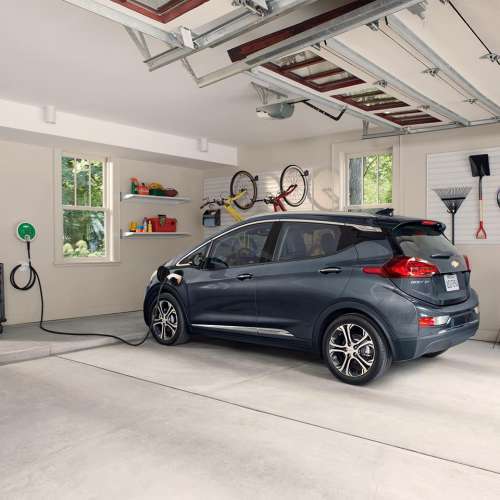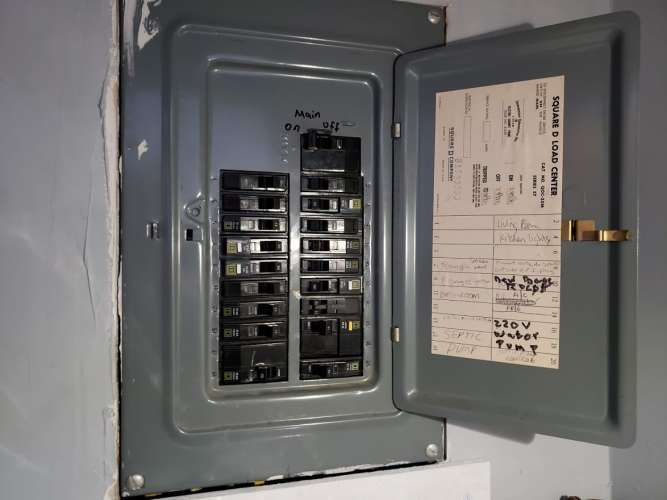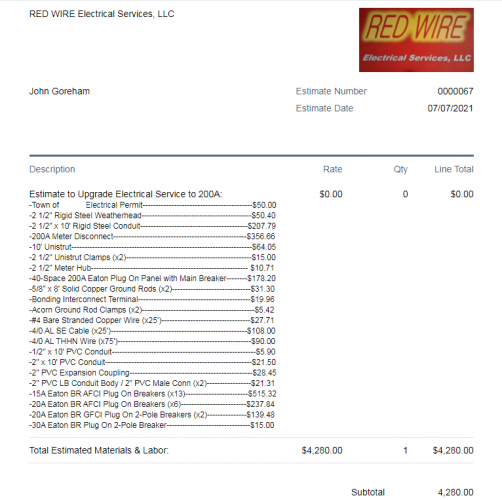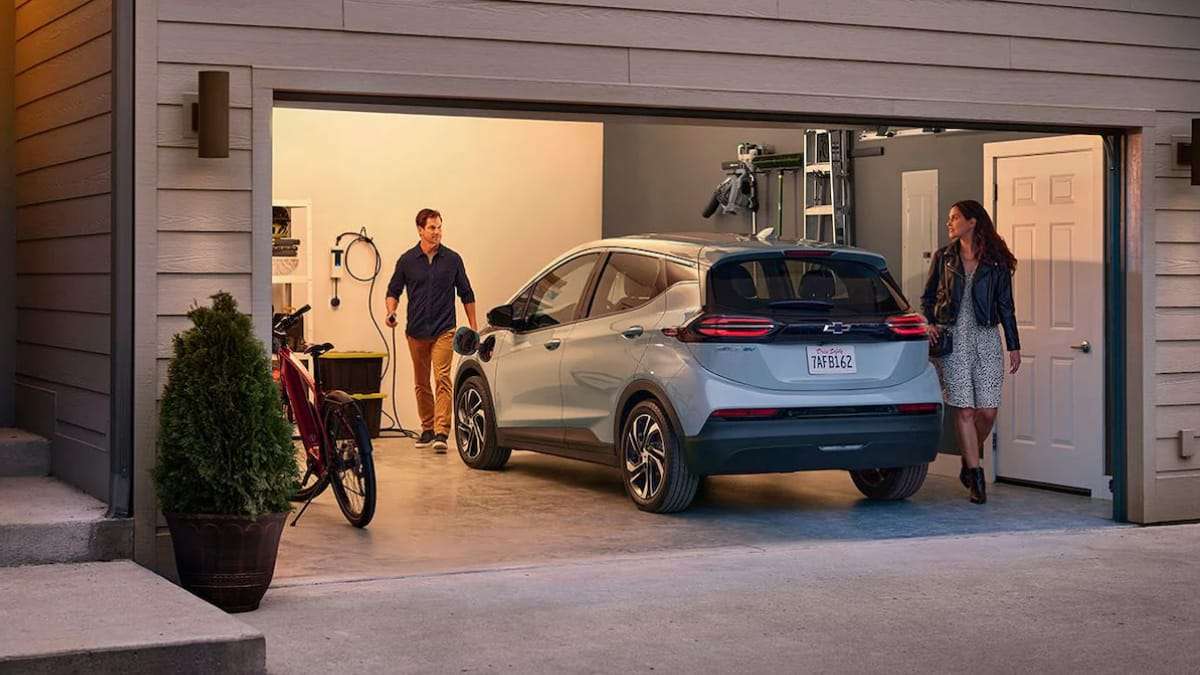Congratulations! You are buying an electric vehicle. If you are already thinking about home charging, that is wise. 90% or more of the EV owners we poll say that they charge almost exclusively in their homes.
Before we go too far, note that an EV charger is sometimes called an EVSE (Electric Vehicle Supply Equipment). We call it a charger here because that’s what most EV owners and the people who make home chargers say when they refer to the think on tour wall that helps you charge up your EV.
Here is what you need to do to get a home charger up and running.
 Related Story: Everything You Need To Know About DIY Electric Vehicle Charger Installation
Related Story: Everything You Need To Know About DIY Electric Vehicle Charger Installation
Step One - Think Big (or Bigger)
When considering an EV charging setup, it is important to buy the charger you may need tomorrow, not today. I was lucky enough to already have a 20-amp 230 V service line and receptacle in my own home. So, I purchased an inexpensive $199 charger on Amazon, and it delivers about 10 range miles power hour on the charger. I’m happy with that as an EV tester who owns three ICE cars to take me anyplace I want to go. If you are buying a battery-electric vehicle, you may want to get a faster setup.
Realize that as EVs evolve their charging capacity, how quickly they can gobble up electrons is increasing. Case in point; Tesla suggests a 60-amp circuit. The new Ford F-150 EV truck will have a wall charger from Ford that operates at 80 amps. So, we suggest that you install a breaker, service line, and endpoint (receptacle or junction box) for your charger that is more than what you may think is needed today.
Related Story: These Are The Three Silliest Electric Vehicle Questions Owners Ask
Step Two - Plan For Two EVs
If your home setup is inside a two-car garage or in a driveway that can accommodate multiple vehicles, consider getting two lines on their own breakers installed. You may not need two now, but you may in the future, or the person to whom you eventually sell the house may have two EVs.
 Step Three - Your Panel May Need To Be Upgraded
Step Three - Your Panel May Need To Be Upgraded
The panel from which the circuits on your property are distributed, aka the service panel, may need to be updated or changed if you add in new high-amperage circuits. Many (seriously many) EV owners in EV clubs report that this is the single most pricey part of getting a home EV charger setup. A new service panel with a 200-amp capacity can cost up to and beyond $5,000. Nobody wants to admit that an EV charger uses more electricity than anything else in a home. Or that an EV used daily may double your energy usage. Both are true.
 Budget For Your Charger
Budget For Your Charger
On top of panel, you need to run the lines for the new EV chargers. Then there is the cost of the chargers themselves, which run from a minimum of $200 up to $1,000. Most decent EV chargers, like Tesla’s Wall Charger, run about $500. However, add in Tesla's accessories for that charger like a pedestal and wiring kit and the cost is almost $1,000.
Call An Electrician - Plan For Permitting
Using Google or another trustworthy source, locate and read reviews of electricians that can install your charger safely, professionally, and with a building permit. Most municipalities in America require a permit for any new outlet installation. A permit is not expensive, and you get a second electrician to look over the installation to ensure it meets code as part of the fee your town will charge you. Bear in mind the electrician doesn’t need to know which car you selected. All she will need to know is that amperage line(s) you will need to power it and where you want it on the property.
Buy a Charger
Which charger you select will depend on whether you are going to charge inside or outside. Look for the UL listing for the product you choose. Chargers can also plugin or be hard-wired in place. Which works best will depend on your situation.
Which charger is right for you is beyond the scope of just one quick article, but here is a great place to start. We strongly suggest reading reviews of the product you plan to buy. One last tip; Many experts say that smart chargers are the only way to go. These chargers enable you to schedule charging with your electricity provider. If we were shopping, that would be something we would look closely at.
Get Your Charger Paid For
Many vehicle manufacturers, including GM right now, want to help you pay for your charger setup. Your electricity provider may also want to help. Why not say “yes?” Search for a way to get help paying for your charger. It is pretty common for the cost to be covered, or partially covered.
If you have installed an EV charger you are happy with, or one that taught you some lessons, please share what you’ve learned below. You may help a fellow EV owner make a more informed decision.
John Goreham is a long-time New England Motor Press Association member and recovering engineer. John's interest in EVs goes back to 1990 when he designed the thermal control system for an EV battery as part of an academic team. After earning his mechanical engineering degree, John completed a marketing program at Northeastern University and worked with automotive component manufacturers, in the semiconductor industry, and in biotech. In addition to Torque News, John's work has appeared in print in dozens of American newspapers and he provides reviews to many vehicle shopping sites. You can follow John on TikTok @ToknCars, on Twitter, and view his credentials at Linkedin






Comments
Thanks for the thorough
Permalink
Thanks for the thorough analysis John. It does look at bit scary as you have laid it out however. I had my 240V EVSE installed 8 years ago and at that time it cost me $500 for the EVSE (which were more expensive then) and $500 for an electrician to wire it up. I happened to have a 200Amp service, but my slower charging rate only needed a 20A breaker, and I did happily have space in my electrical box. My electrical water heater actually uses the most power for me currently (8kW), and the clothes dryer uses 5kW, where my EVSE uses under 4kW. Now a newer EV will probably draw twice that much (7.7kW), but it still shouldn't need more than a 40A circuit. In fact doesn't the 2022 Bolt EV/EUV come with a free install of a NEMA 14-50 outlet and supply all of the materials including a new 40-amp circuit breaker through Chevy's partner Qmerit?
Yes! GM is helping out with
Permalink
In reply to Thanks for the thorough by DeanMcManis (not verified)
Yes! GM is helping out with the circuit and breaker. I have embedded a link in the story to help draw attention to the program. The Bolt community is reporting it is very easy to use and many have taken advantage of it already.
EV may and probably is the
Permalink
EV may and probably is the future and while I could get on board ,we need to remember how ,for the most part, we make that electricity. Petroleum and coal. Perhaps solar and wind will take over at some point, but remember the Texas ice storms this past winter. Solar and wind did very little to help. The infrastructure has to expand also in these vast distances such as in Texas. But range is my biggest concern that keeps me from buying an EV. From Beaumont Texas to El Paso is over 800 miles. How many stops and how long do I have to add in on a trip with a 200-250 mile range!? No thank you. With a couple of screaming kids a wife and maybe a dog,most people won't put up with that. Are we there yet?
If Texas was tied into the
Permalink
In reply to EV may and probably is the by Ken Beasley (not verified)
If Texas was tied into the national grid they would have not had any problem. Take a lesson from San Antonio. Kansas and Iowa are further north and I have never heard of their wind turbines freezing up. Sure someone wasn’t snookering you.